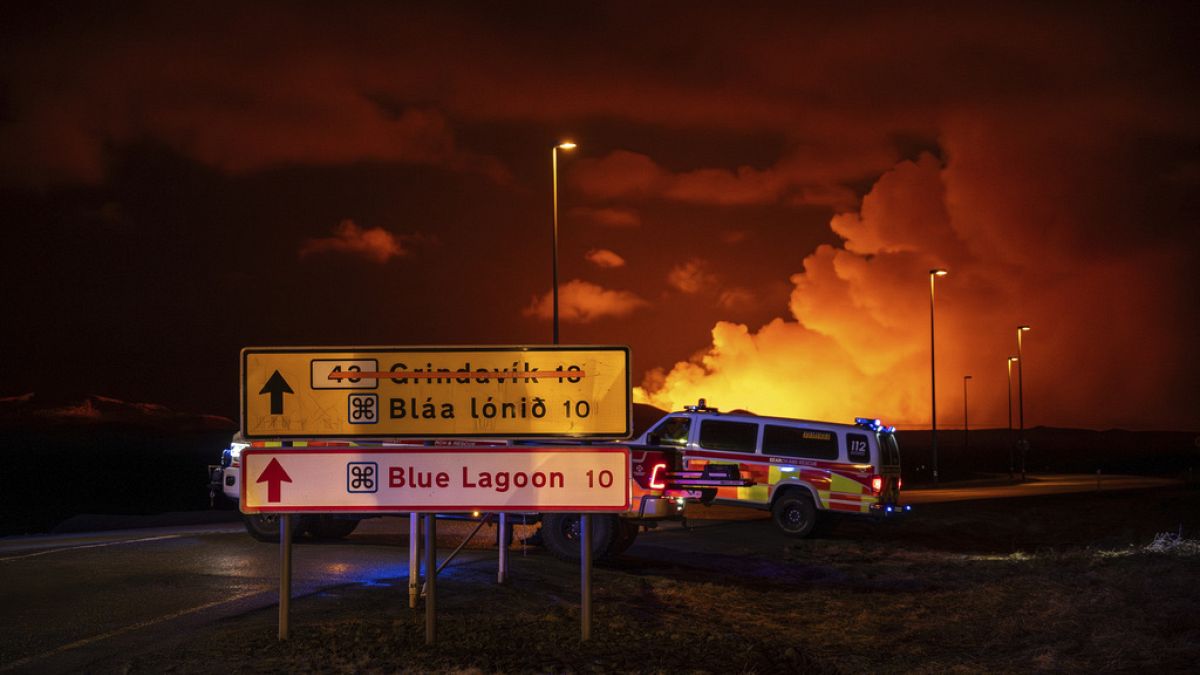Iceland volcano erupts for fourth time in three months, despite reports that defences are holding up and eruptions are weakening.
Lava from a volcanic eruption in Iceland flowed Sunday toward defences around the town of Grindavik, which have so far held the molten rock back from the evacuated community.
Scientists said the eruption appeared to be weakening and would probably peter out within hours.
A volcanic system on the Reykjanes Peninsula in the country's southwest erupted late Saturday for the fourth time in three months, sending orange jets of lava into the night sky.
Iceland’s Meteorological Office said the eruption opened a fissure in the earth about 3 kilometers (almost 2 miles) long between the mountains of Stóra-Skógfell and Hagafell.
The Met Office said Sunday that lava was flowing south and southeast at about 1 kilometre (0.6 miles) an hour, and might reach the ocean. Defensive barriers were built to stop it inundating the main road along the peninsula’s southern coast.
Hundreds of people were evacuated from the Blue Lagoon thermal spa, one of Iceland’s top tourist attractions, when the eruption began, national broadcaster RUV said.
No flight disruptions were reported at nearby Keflavik, Iceland’s main airport.
The eruption site is a few kilometres northeast of Grindavik,a coastal town of 3,800 people) about 50 kilometres (30 miles) southwest of Iceland’s capital, Reykjavik.
The town was evacuated before the initial eruption on 18 December. A second eruption that began on 14 January sent lava toward the town. Defensive walls that had been bolstered after the first eruption stopped some of the flow, but several buildings were consumed by the lava.
Both eruptions lasted only a matter of days. A third eruption began 8 February. It ended within hours, but not before a river of lava engulfed a pipeline, cutting off heat and hot water to thousands of people.
Iceland, which sits above a volcanic hot spot in the North Atlantic, sees regular eruptions and is highly experienced at dealing with them. The most disruptive in recent times was the 2010 eruption of the Eyjafjallajokull volcano, which spewed huge clouds of ash into the atmosphere and led to widespread airspace closures over Europe.
The latest eruptions signal a reawakening of the Svartsengi volcanic system after almost 800 years of quiet. It's unclear when the period of activity will end or what it means for the Reykjanes Peninsula, one of the most densely populated parts of Iceland.
No confirmed deaths have been reported from any of the recent eruptions, but a workman was declared missing after falling into a fissure opened by the volcano.
